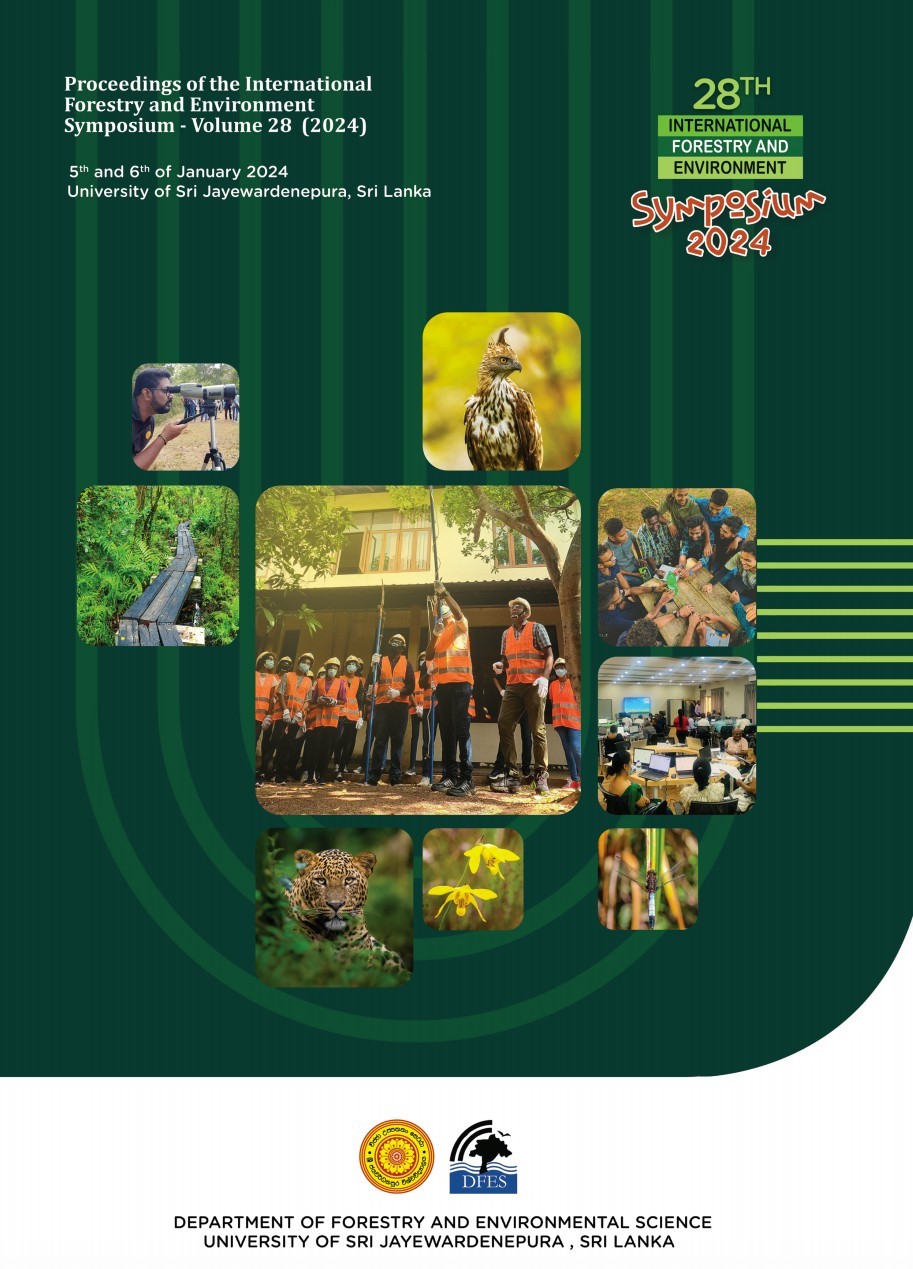The Survival of Antagonistic Fungi Against the White Root Disease of Rubber (Hevea brasiliensis) Under Field Conditions
DOI:
https://doi.org/10.31357/fesympo.v28.7075Abstract
White root disease of rubber caused by Rigidoporus microporus is considered as a very destructive root disease in Sri Lankan rubber plantations. The disease has a significant impact on annual rubber production. Therefore, use of a proper disease management method to control the white root disease is critical. Although, chemical fungicides are commonly used to control the disease, excessive usage is harmful to human and natural environment. However, usage of chemical fungicides cannot be avoided due to their high effectiveness and fast action. Hence, development of an integrated disease management method using chemical, cultural and biological methods is essential. Biological methods have many advantages compared to the chemical methods. Trichoderma is a fungal genus that is often employed as a bio control agent. Trichoderma spp. have been previously isolated from different rubber plantation soils by the Rubber Research Institute of Sri Lanka. Their antagonism against R. microporus has been investigated. T. koningii and Hypocea lixii (teleomorph of T. harzianum) have been selected as the best antagonists against R. microporus. A mixture of the two fungi has been cultivated in a compost-based carrier medium. However, investigation of the viability of the fungi in the final product under field condition is critical before application. Hence, the current study was conducted to investigate the survival of the selected antagonistic fungi under field conditions. Five healthy rubber plants were selected and planted on the ground. Four plants were planted around one middle plant. The middle plant was artificially infected with white root disease pathogen. One kilogram of compost inoculated with Trichoderma product was added to the root system of other 04 plants. Control was carried out with compost added plants without Trichoderma spp. inoculum. Ten sets of plants were maintained for each test and control. Plants were observed after 06 months, and soil samples were tested. In control, the middle plant and other 04 plants showed symptoms. In Trichoderma inoculated plants, only middle plant showed symptoms. Moreover, Trichoderma spp. had grown on culture plates which inoculated with soil samples taken around Trichoderma spp. inoculated plants. Microscopic characters also confirmed that the grown fungi are Trichoderma spp. According to the results of the study, the product actively works against white root disease and their viability also expands up to 06 months of application. Trichoderma isolates are helpful as a bio-pesticide for the improvement of a sustainable and eco-friendly agriculture.
Keywords: Antagonistic fungi, Hevea brasiliensis, Trichoderma spp., Viability, White root disease



